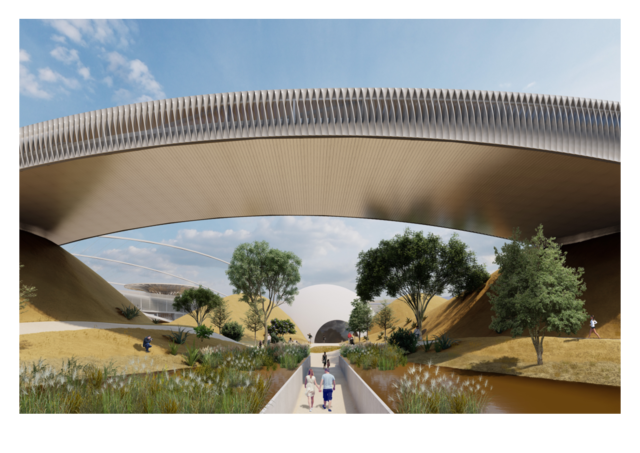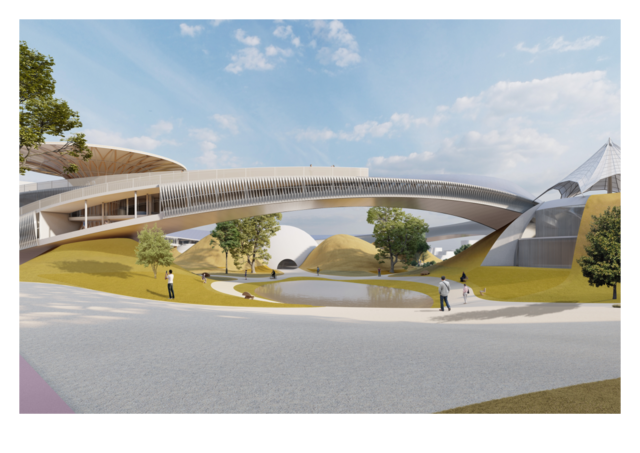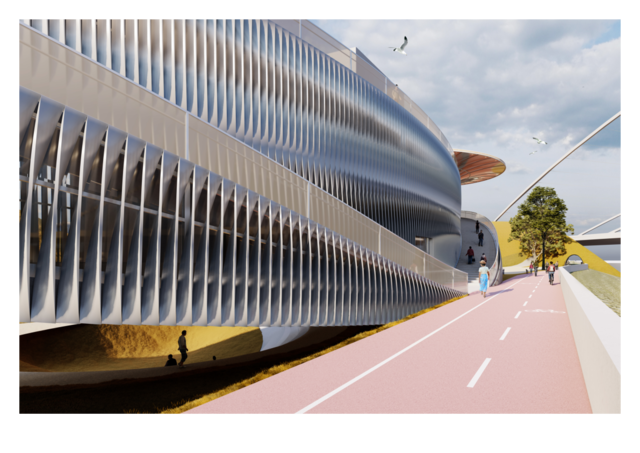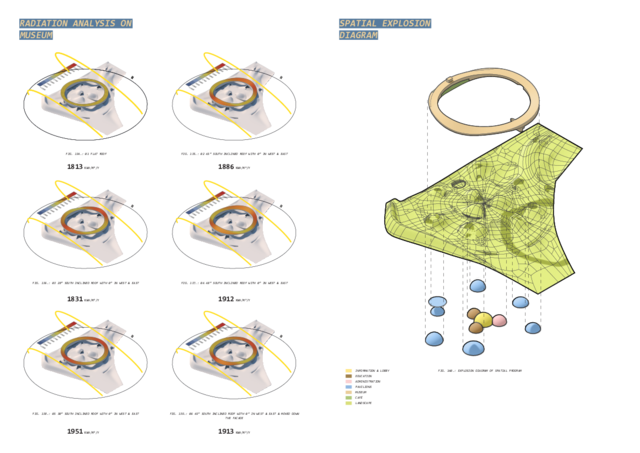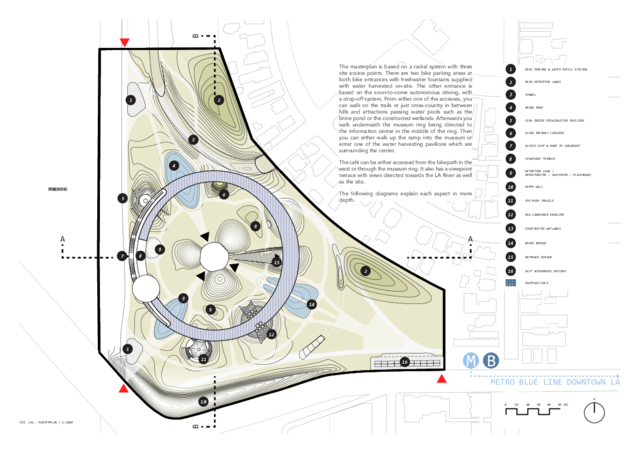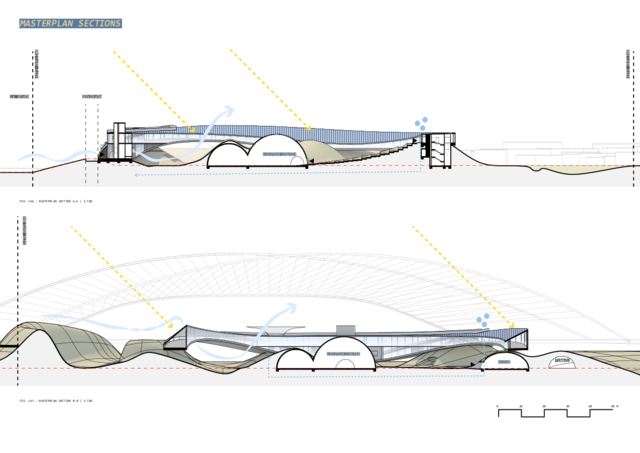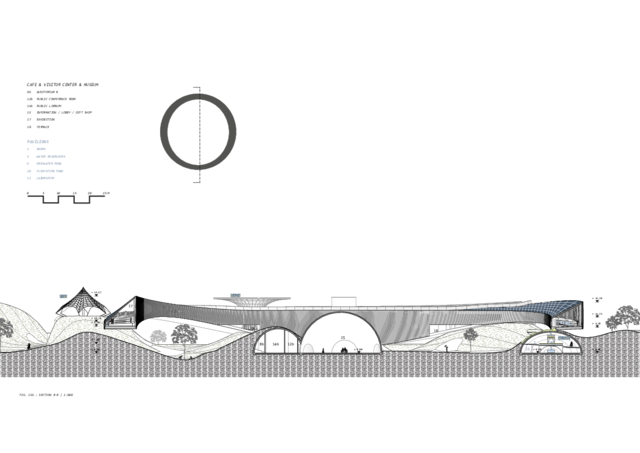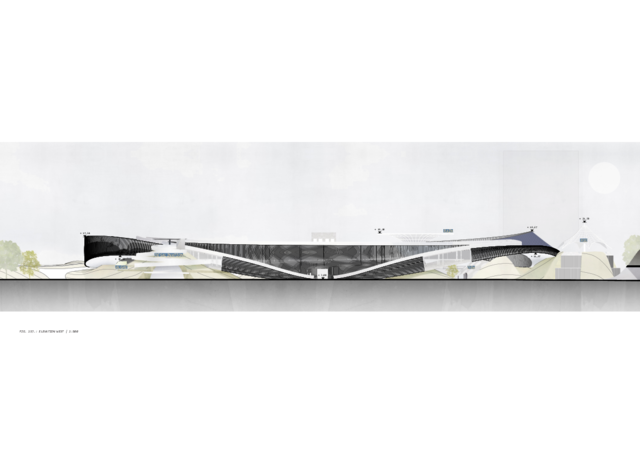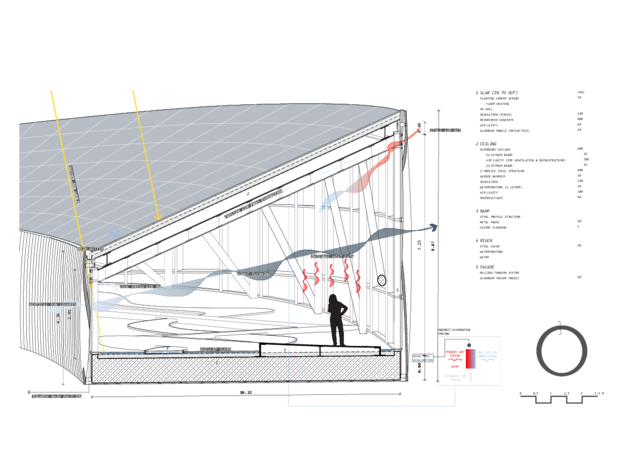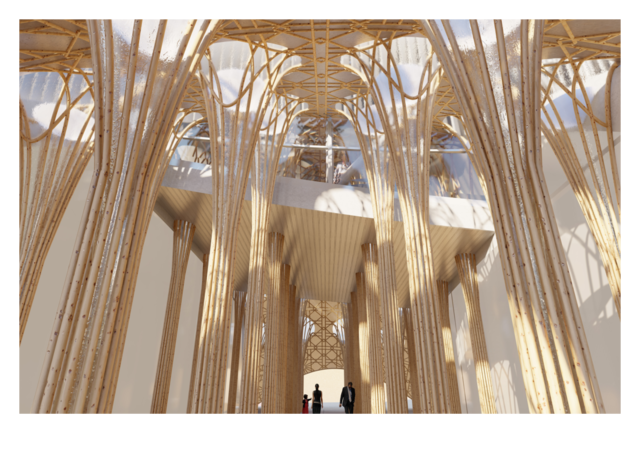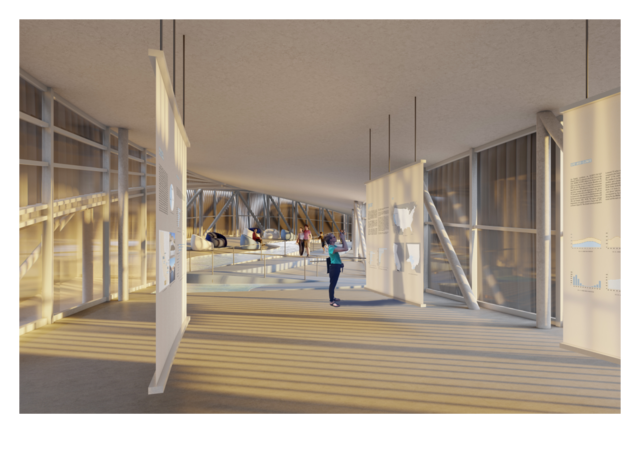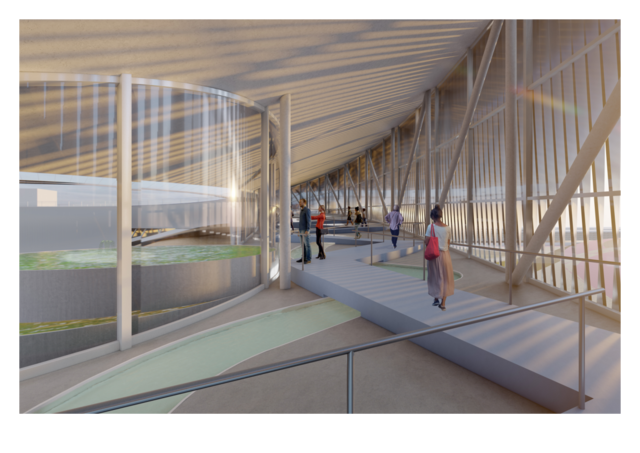The Water Cycle
An Exhibition Site with a Museum and Pavilions for the Demonstration of Water Harvesting Techniques
Christoph Schickermüller
2022
While to many people in the world water seems like an infinite source, around one third of the world's population is already living with water scarcity and by 2050 half of the globe is estimated to be burdened by it (Burek et al. 2016, 9).
Even though there is a lot of water on earth – around 71% of earth's coverage (Williams 2014) – only around 1% of that is freshwater and it unfortunately is very unevenly distributed (Water Science School 1993). Humans know they cannot live without water, nevertheless the world's water consumption habits are unsustainable: Agriculture loses on average 60% of water (WWF, n.d.) and globally 80% of wastewater is released back to nature untreated (UN, n.d.), contaminating water bodies on which we rely on, killing ecosystems and causing more problems.
Not only is there the need for more conscious consumption, but also for sustainable development in the areas of how to protect our water resources and how to react to global challenges like climate change, population and economic growth and urbanization.
With the water demand increasing we need to find a way of sustainably utilizing the available water, harvesting new water, and changing our consumption patterns.
This project’s goal is to raise awareness, to show opportunities in harvesting and treating water for a sustainable water future. The design is situated in the Greater Los Angeles Region. It consists of a museum with various pavilions to engage people's consciousness about water and what impact it has on all our lives. Furthermore, state-of-the-art technologies will be implemented in pavilions to harvest water from saltwater, rainwater, the atmosphere, and wastewater to offer the visitor unique sights into those sciences.
The world is increasingly suffering from global problems related to energy, food and especially water due to global climate change, higher demand, growing populations and urbanization. The UN defines the position of water as follows (UN Water, n.d.) “Water is at the core of sustainable development and is critical for socio-economic development, healthy ecosystems and for human survival itself. It is vital for reducing the global burden of disease and improving the health, welfare and productivity of populations.”
Estimations show that around half of the global population is already facing water scarcity at least one month per year (Burek et al., 2016, 9) and future projections are bleak.
What are the problems? Is there anything people can do to stop or counter those dark predictions? Is there something architects or engineers can contribute to contain those prospects?
